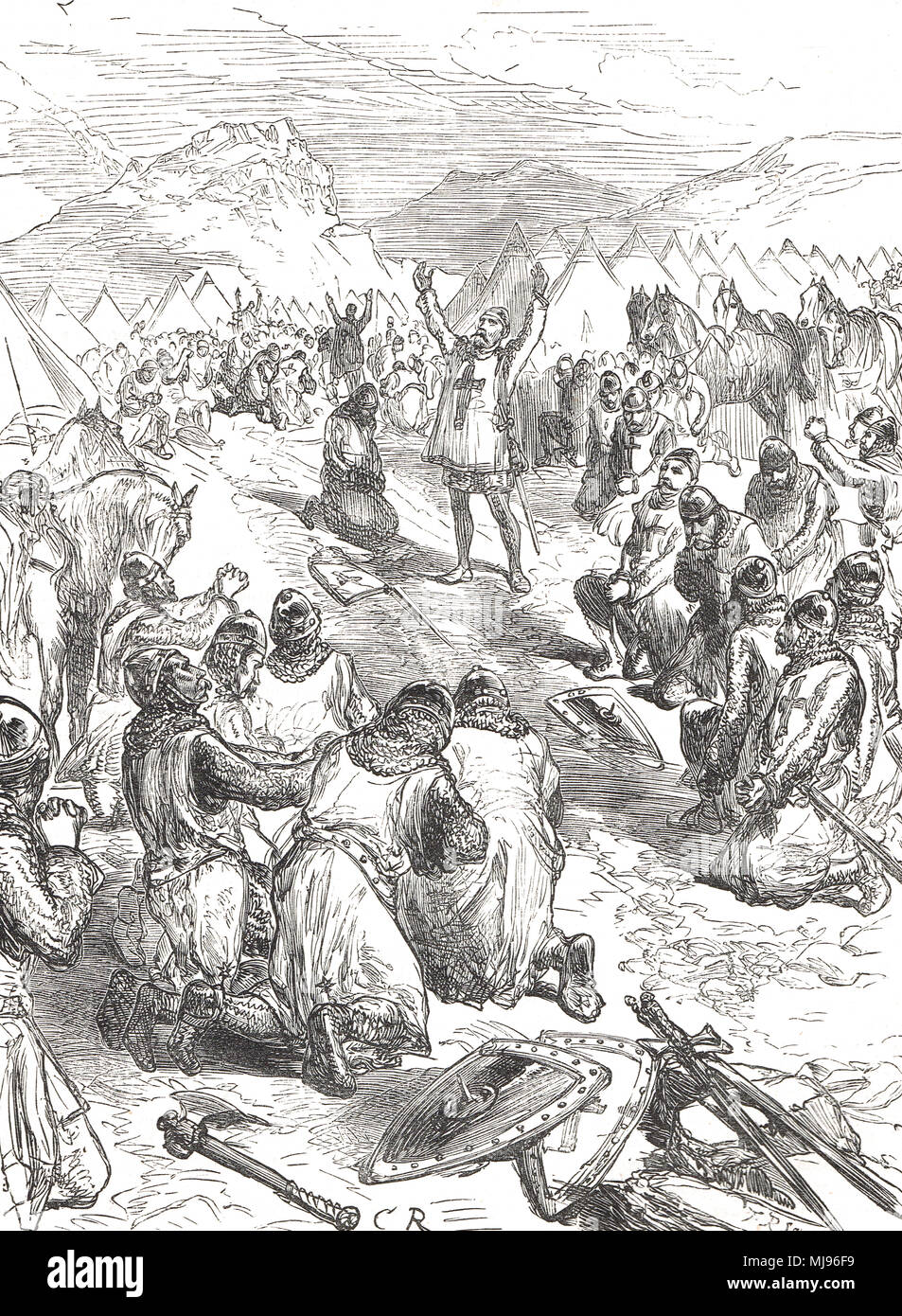A Crusader camp during the third crusade in the holy land, 1191. Crusader cries of "save the holy sepulchre"

Image details
Contributor:
Historical Images Archive / Alamy Stock PhotoImage ID:
MJ96F9File size:
39.3 MB (3.6 MB Compressed download)Releases:
Model - no | Property - noDo I need a release?Dimensions:
3176 x 4329 px | 26.9 x 36.7 cm | 10.6 x 14.4 inches | 300dpiDate taken:
1896More information:
This image could have imperfections as it’s either historical or reportage.
Illustration from Cassell's illustrated history of England published circa 1896. During the third crusade it is said that every night when the Crusaders encamped the heralds blew their trumpets, and cried three times, “Save the Holy Sepulchre!” And the Crusaders knelt and said, “Amen!” Info from wiki: The Third Crusade (1189–1192), also known as The Kings' Crusade, was an attempt by European leaders to reconquer the Holy Land from Saladin (Ṣalāḥ ad-Dīn Yūsuf ibn Ayyūb). The campaign was largely successful in capturing the important cities of Acre and Jaffa, and reversing most of Saladin's conquests, but it failed to capture Jerusalem, the emotional and spiritual motivation of the Crusade. After the failure of the Second Crusade, the Zengid dynasty controlled a unified Syria and engaged in a conflict with the Fatimid rulers of Egypt. The Egyptian and Syrian forces were ultimately unified under Saladin, who employed them to reduce the Christian states and recapture Jerusalem in 1187. Spurred by religious zeal, King Henry II of England and King Philip II of France (known as Philip Augustus) ended their conflict with each other to lead a new crusade. The death of Henry in 1189, however, meant the English contingent came under the command of his successor, King Richard I of England (known as Richard the Lionheart, in French Cœur de Lion). The elderly German Emperor Frederick Barbarossa also responded to the call to arms, leading a massive army across Anatolia, but he drowned in a river in Asia Minor on 10 June 1190 before reaching the Holy Land. His death caused tremendous grief among the German Crusaders, and most of his troops returned home. After the Crusaders had driven the Muslims from Acre, Philip in company with Frederick's successor, Leopold V, Duke of Austria (known as Leopold the Virtuous), left the Holy Land in August 1191. On 2 September 1192, Richard and Saladin finalized a treaty granting Muslim control over Jerusalem but allowing unarmed Christian pilgrim